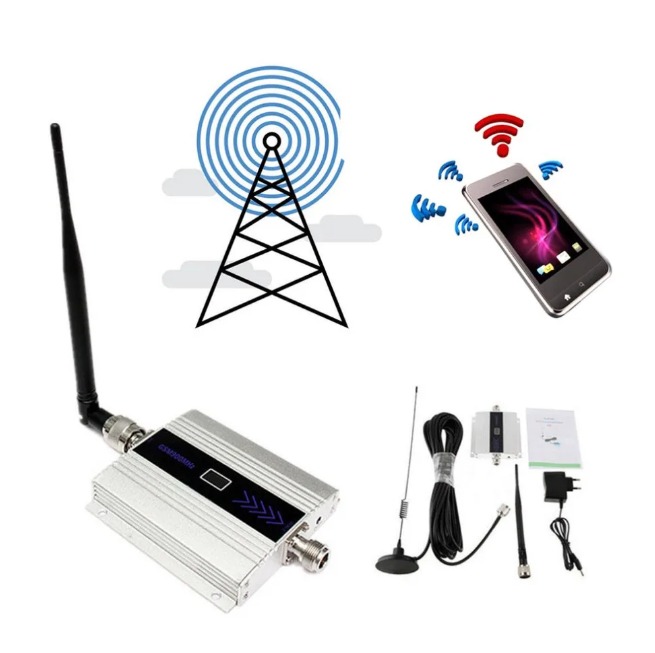Boosting Connectivity with a Mobile Network Repeater

In an age where staying connected is paramount, a mobile network repeater emerges as a silent hero, ensuring that cellular signals remain strong and reliable even in challenging environments. These devices, composed of an external antenna, a signal booster, and an internal antenna, play a pivotal role in amplifying cellular network signals. In this comprehensive guide, we will delve into the world of mobile network repeaters, understanding their components, functionality, and the significant impact they have on improving voice calls and data transmission in areas plagued by poor coverage or interference.
Understanding the Mobile Network Repeater
At its core, a mobile network repeater is designed to address one critical issue: signal amplification. It comprises three essential components:
-
External Antenna: The first piece of the puzzle is the external antenna. This antenna is strategically positioned to capture the existing cellular signal from the nearest base station. It acts as the initial point of contact with the network and ensures that even weak signals are captured effectively.
-
Signal Booster: The signal booster is the heart of the repeater system. Its primary function is to amplify the captured signal's strength. This boost in signal power ensures that the network signal is robust enough to serve the devices within its designated range.
-
Internal Antenna: Once the signal has been amplified, it is transmitted to the internal antenna. This antenna is responsible for distributing the enhanced signal within its coverage area. Devices like smartphones, tablets, and other mobile devices within this range can now enjoy improved connectivity.
How a Mobile Network Repeater Works
The functionality of a mobile network repeater is elegantly simple. It acts as a bridge between your mobile device and the nearest base station. Here's a step-by-step breakdown of how it operates:
-
Signal Capture: The external antenna is strategically placed in an area where it can capture the existing cellular signal. This is usually on the exterior of a building, where signal strength tends to be stronger.
-
Signal Amplification: The captured signal is then fed into the signal booster. The booster's role is to enhance the signal's strength, making it more powerful and stable.
-
Signal Distribution: The amplified signal is transmitted to the internal antenna, which is typically located indoors. This internal antenna then broadcasts the improved signal to the devices within its range.
-
Improved Connectivity: Devices within the repeater's coverage area now have access to a stronger and more reliable cellular signal. This translates to improved call quality, faster data speeds, and a more seamless mobile experience.
Benefits of a Mobile Network Repeater
The advantages of using a mobile network repeater are far-reaching and impactful, especially in areas with poor coverage or interference. Here are some key benefits:
1. Enhanced Call Quality
One of the most immediate and noticeable improvements is in voice call quality. Weak or choppy calls become a thing of the past as the repeater ensures a strong and clear connection, leading to crystal-clear conversations.
2. Improved Data Transmission
In an era where data connectivity is essential for work, entertainment, and communication, a mobile network repeater ensures that data transmission is swift and reliable. Buffering videos and slow-loading web pages become distant memories.
3. Better Battery Life
Weak signals force mobile devices to work harder to maintain a connection, draining their batteries faster. With a repeater in place, your devices can operate with less strain, resulting in improved battery life.
4. Wider Coverage
Mobile network repeaters come in various models, some of which can cover large areas like homes, offices, or even warehouses. This means that multiple users can benefit simultaneously within the repeater's coverage zone.
Applications of Mobile Network Repeaters
Mobile network repeaters find applications in a wide range of settings, including:
1. Residential Areas
Homes located in rural or remote locations often suffer from poor network coverage. A mobile network repeater can transform these areas into zones of reliable connectivity.
2. Commercial Buildings
Large office complexes and commercial spaces can experience cellular signal degradation due to building materials and interference. Repeaters ensure that employees and visitors have consistent connectivity throughout the premises.
3. Remote Areas
In remote regions where cellular towers are scarce, a mobile network repeater can be a lifeline, enabling communication and data access in places where it was previously impossible.
4. Vehicles
Some mobile network repeaters are designed for use in vehicles, such as cars, RVs, and boats. These ensure that you stay connected even on the go, regardless of your location.
Conclusion
In a world that relies on seamless connectivity, the mobile network repeater stands as a beacon of hope for those in areas with poor coverage or interference. By harnessing the power of signal amplification, these devices elevate call quality, data transmission, and battery life, ensuring that you stay connected when and where it matters most. Whether in your home, office, or during your travels, the mobile network repeater is a versatile solution that bridges the gap between you and the cellular network, enhancing your mobile experience.

 Mobile Signal Booster
Mobile Signal Booster